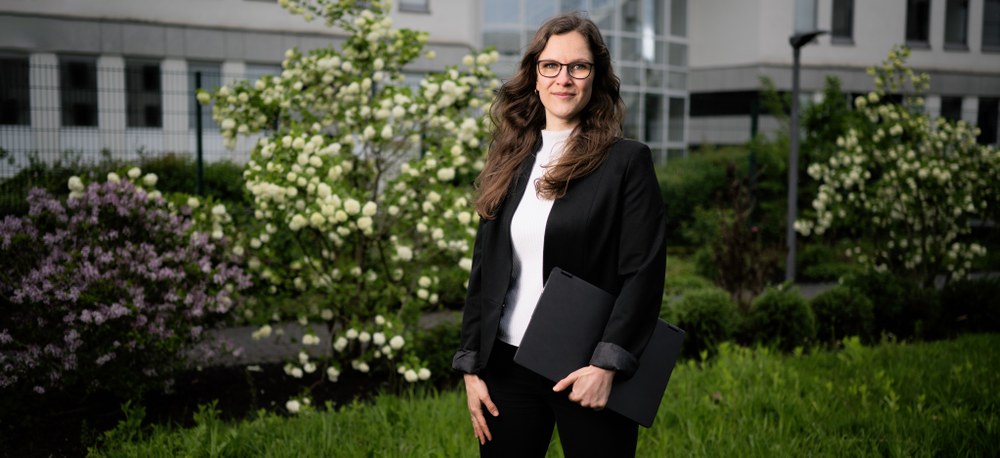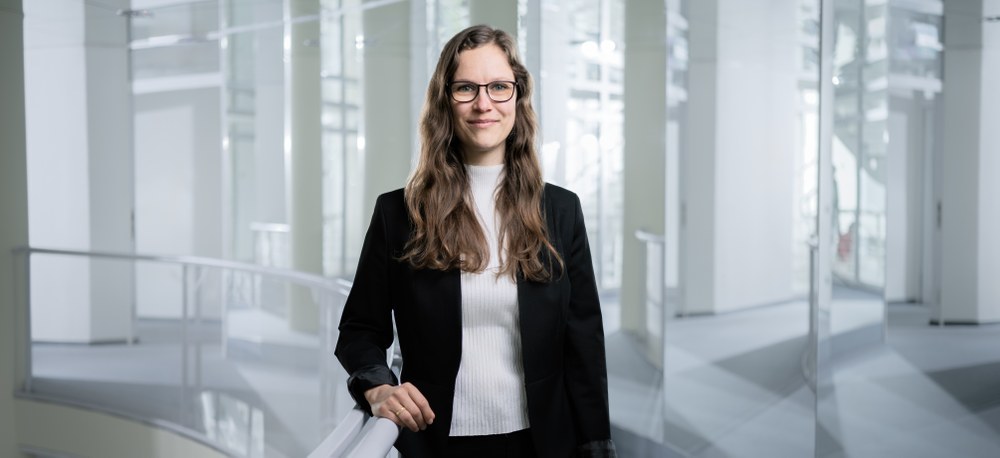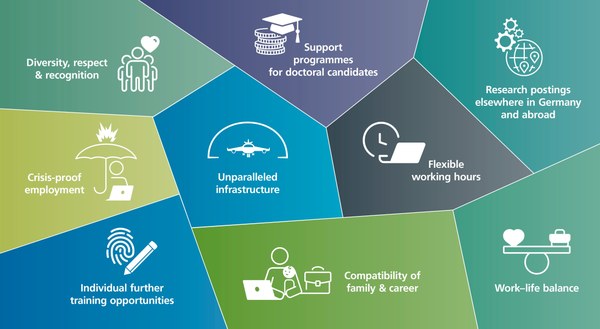Anika Lindener
Field of study: Geography
Now: DLR Projektträger, Environment and Sustainability
Anika Lindener studied geography in Erlangen and Bonn and has been a scientific officer on the topic of removing carbon dioxide from the atmosphere in the DLR Projektträger’s Environment and Sustainability division since 2020. In this interview, she provides insights into her work in the Climate, Policy, International department.
Anika, what do you look forward to when coming to work in the morning?
Anika: A bike ride along the Rhine. And then, of course, a great working atmosphere with colleagues from a wide range of disciplines. The people who work here come from fields including atmospheric science, sociology, economics or environmental sciences. And as a geographer, I'm right in the middle of it all. I like that.
„I am actively involved in shaping research funding for carbon dioxide removal.“
What are you working on?
Anika: I support research projects on removing carbon dioxide from the atmosphere. I do this on behalf of the Federal Ministry of Education and Research (BMBF). Together with the officers there and external experts, we designed the 'CDRterra' research programme at the DLR Projektträger and are now in the process of implementing it. Thanks to the funding, people in the research projects can find out which carbon dioxide removal methods work well and are also environmentally friendly, economically viable and socially accepted.
In this way, I am actively involved in shaping research funding for carbon dioxide removal and always have my finger on the pulse of science. At the same time, we at the DLR Projektträger are involved in various political processes relating to carbon dioxide removal in an advisory capacity. As a team, we prepare findings from the research projects in a compact and comprehensible way so that they can be incorporated into political decision-making processes. So with my work, I’m able to bridge the gap between policy and research.

What does your typical working day involve?
Anika: There is no such thing as a typical working day for me. There are times when I’m more focused on content and strategy; for instance, when we are developing a new funding guideline. And there are times when I'm on the phone a lot: for example, when we advise researchers interested in funding. I clarify with them whether the content of their project fits in with our funding programme and whether they meet the requirements and can apply.
How is your work being used?
Anika: To achieve our climate targets, we have to reduce our emissions – and drastically. However, this alone will probably not enable us to meet the 1.5°C target and achieve climate neutrality by 2045. We will therefore also need to actively remove carbon dioxide from the atmosphere and store it permanently.
With my work, I am helping to ensure that this succeeds and that the scientific foundations for far-reaching future developments are laid.

What are the highlights of your work?
Anika: It motivates me to realise that the knowledge from our funding projects is actually being taken up by policymakers. A scientific basis is very important, especially for a topic as controversial as carbon dioxide removal.
„A scientific basis is very important, especially for a topic as controversial as carbon dioxide removal.“
What special skills can you make good use of in your job?
Anika: My technical and strategic thinking is often required. I'm good at keeping an overview and identifying connections. Particularly in the area of human-environment relations, it is important that we can link scientific processes with social dynamics and ask the right questions.
Leave us a final thought.
Anika: Through my work at the DLR Projektträger, I feel that I can make a small contribution to building a climate-compatible future. This means a lot to me.




